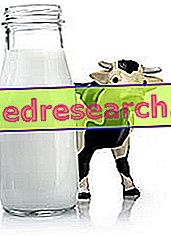Definition and foods rich in bran
Bran is a kind of fibrous shell that covers the seeds of wheat and other cereals. After being separated from the flour, according to a process called refining, it comes in the form of flakes that are more or less wide and very distinct.
Until the early 1970s the bran was considered a waste product, to be mainly used for feeding livestock.

Since the 1970s, dietary fiber has increasingly attracted the interest of nutritionists, thanks to its ability to prevent many diseases typical of the welfare society (constipation, obesity, irritable bowel, colon cancer, etc.).
| Type of bran | Fiber content percentage |
| Wheat | 40-50% |
| Oats | 15-20% |
| Barley | 5% |
| Rice | 20-30% |
Wheat bran is preferable to other types in case of constipation, both in terms of quantity and quality. It is in fact richer in insoluble fibers, which give it the ability to swell, absorbing water up to 400% compared to its weight. In the case of diabetes, diverticulosis or hypercholesterolemia, food sources that are richer in soluble fiber are preferred.
Benefits and properties of bran
- Facilitates intestinal transit: the bran performs a softening, massifying and homogenizing action of the stools, increasing the motility of the colon and reducing the pressure on the intestinal walls. This property is particularly beneficial in the prevention of diverticulosis and colon cancer (the fiber facilitates the elimination of toxic residues introduced with food). The laxative effect is all the more pronounced the more the bran is rich in insoluble components.
- Contrasts hyperalimentation: swelling at the gastric level causes an anticipated sense of satiety, which prevents the ingestion of excessive quantities of food. The fiber has a limited caloric intake, practically zero if we consider the reduced intestinal absorption of the nutrients to which it is associated. Bran is therefore useful for combating overweight and obesity.
- It modulates the absorption of nutrients: thanks to its ability to reduce the absorption of fat and cholesterol, bran is particularly important in the diet of those suffering from hypercholesterolemia or a high rate of triglycerides in the blood. Furthermore, by modulating the glycemic curve, it helps to avoid excessive increases in blood sugar and is therefore indicated in the prevention of senile diabetes.
The integration of bran, in the order of 8-24 g per day (1-3 tablespoons), accompanied by at least two liters of liquids, is therefore indicated in case of constipation, irritable bowel disease, diverticular disease, diabetes, dyslipidemia, overweight and obesity.
Initially the intake of bran is accompanied by undesirable effects such as distension and excessive flatulence, such problems tend however to regress within 4-6 weeks. To counteract these unpleasant disorders, a gradual increase in the doses and a subdivision of the same at different times of the day is necessary.
Disadvantages and contraindications
Fiber supplements and pharmaceutical preparations are now many, so much so that the old bran is often associated with other natural stool massaging agents, such as glucomannans, agar agar or karaja gum.
Rather than using these products, it would be better to regularize your eating habits by increasing your fruit and vegetable intake. It is clear that the simple addition of fiber supplements is not comparable to the benefits of a naturally rich diet of these substances.
If the cereal from which the bran is extracted is not of biological origin, the risk of ingesting the synthetic chemical agents that are normally removed together with it is high.
Prolonged use of bran can also lead to depletion of vitamins and minerals, interfering with the absorption of calcium, iron, phosphorus and zinc.
Finally, individual tolerance to bran consumption must be considered. Its use can in fact increase the production of intestinal gas, causing swelling and an annoying sense of relaxation. The bacterial degradation of its components can thus aggravate some forms of colitis or worsen irritable bowel syndrome and meteorism symptoms.
Rather than resorting to an indiscriminate use of bran, it is better to rely on a varied diet, gradually increasing the presence of fibers, through the regular consumption of fruit, vegetables and whole grains, which contain both bran and the vitamins and minerals needed for your well-being.
Bran is therefore not a panacea but a useful supplement to use only in special cases, after consulting a doctor or other professionals in the field.



